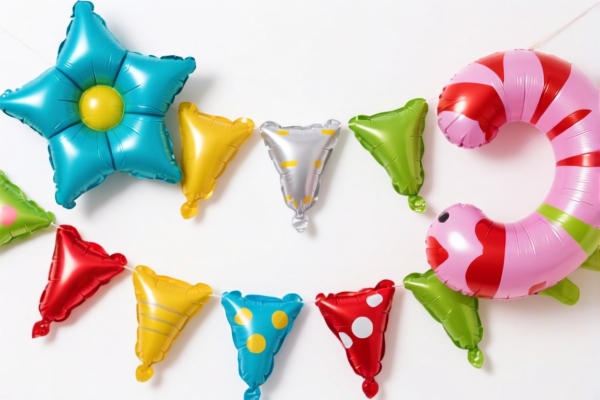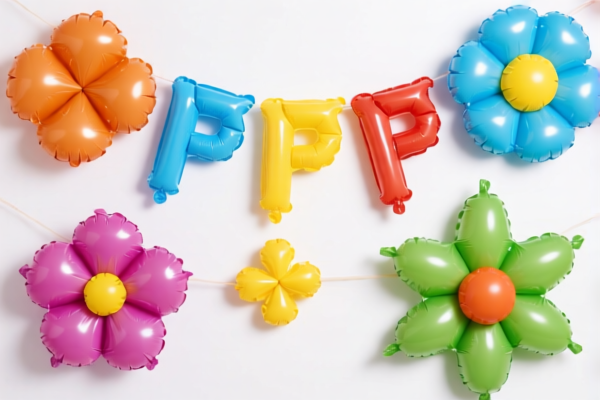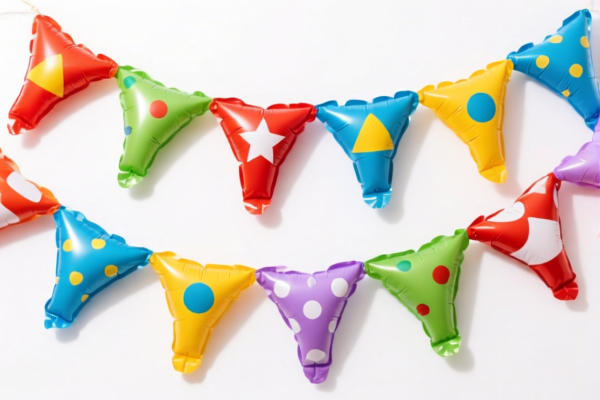| HS Code | Official Doc | Tariff Rate | Origin | Destination | Effective Date |
|---|---|---|---|---|---|
| 4016950000 | Doc | 41.7% | CN | US | 2025-05-12 |
| 4007000000 | Doc | 55.0% | CN | US | 2025-05-12 |
| 5906993000 | Doc | 58.3% | CN | US | 2025-05-12 |
| 5903903090 | Doc | 57.7% | CN | US | 2025-05-12 |
| 5903203090 | Doc | 57.7% | CN | US | 2025-05-12 |
| 6306404100 | Doc | 41.2% | CN | US | 2025-05-12 |
| 6306404900 | Doc | 41.2% | CN | US | 2025-05-12 |
| 9505906000 | Doc | 30.0% | CN | US | 2025-05-12 |
| 9505902000 | Doc | 30.0% | CN | US | 2025-05-12 |
| 3926907500 | Doc | 34.2% | CN | US | 2025-05-12 |
| 3923900080 | Doc | 58.0% | CN | US | 2025-05-12 |




Inflatable Products
Inflatable products are items made from flexible materials – typically polymers like polyvinyl chloride (PVC) or thermoplastic polyurethane (TPU) – that are filled with gas, usually air, to give them structure and functionality. Their defining characteristic is their ability to be easily deflated and compacted for storage and transport.
Materials
- Polyvinyl Chloride (PVC): The most common material due to its low cost, durability, and ease of manufacturing. Often used for larger, heavier-duty inflatables. Can be further categorized into phthalate-containing PVC and phthalate-free PVC, with the latter being preferred for products intended for children due to health concerns.
- Thermoplastic Polyurethane (TPU): A more expensive but higher-performing material. TPU is more flexible, abrasion-resistant, and resistant to chemicals and UV degradation than PVC. Frequently used in higher-end inflatables and those requiring greater durability.
- Nylon/Polyester Fabrics with Coatings: Often used in inflatable tents, bounce houses, and similar structures. The fabric provides strength, while a coating (typically PVC or TPU) provides air retention.
- Rubber: Less common now due to weight and cost, but still used in some specialized applications.
Purpose & Function
Inflatable products serve a wide range of purposes, broadly categorized as:
- Recreational: Providing entertainment and leisure activities.
- Safety: Offering buoyancy or cushioning in emergency or protective scenarios.
- Utility: Providing temporary structures or solutions for specific tasks.
Common Types & Applications
- Inflatable Toys: Including pool floats, beach balls, inflatable animals, and play structures for children.
- Inflatable Furniture: Such as inflatable sofas, chairs, and beds, offering portable seating and sleeping solutions.
- Inflatable Bounce Houses/Castles: Popular for children's parties and events, providing a safe and enclosed play area.
- Inflatable Water Sports Equipment: Including kayaks, paddleboards, boats, and tubes for recreational use on water.
- Inflatable Pools: Providing a convenient and affordable swimming option for homes with limited space.
- Inflatable Tents & Shelters: Offering quick and easy temporary shelter for camping or emergency situations.
- Inflatable Advertising: Including inflatable arches, mascots, and banners used for promotional events.
- Inflatable Rescue Equipment: Including life rafts, rescue boats, and inflatable cushions for emergency services.
- Inflatable Packing Materials: Air pillows used to protect fragile items during shipping.
- Inflatable Structures: Large-scale inflatables used for events, exhibitions, or art installations.
Usage Scenarios
- Residential: Backyard pools, play areas for children, temporary furniture.
- Commercial: Rental businesses (bounce houses, water sports equipment), event planning, advertising.
- Emergency Services: Search and rescue operations, disaster relief.
- Outdoor Recreation: Camping, boating, water sports.
- Industrial/Shipping: Packaging, cushioning.
Inflation Methods
- Mouth Inflation: Suitable for small inflatables.
- Foot Pump/Hand Pump: More efficient for medium-sized inflatables.
- Electric Air Pump: Fastest and most convenient method, especially for larger inflatables.
- Compressed Air: Used for specialized inflatables requiring high pressure.
Inflatable products encompass a range of items designed to be filled with air or gas to maintain their shape and function. These products find applications in recreation, camping, packaging, and various industrial uses.
The following HS codes are relevant to inflatable products, based on the provided reference material:
- 4016950000: This HS code falls under Chapter 40 (Rubber and articles thereof), specifically addressing Heading 4016 (Other articles of vulcanized rubber other than hard rubber). The Subheading 4016950000 further specifies “Other inflatable articles”. The total tax rate is 41.7%, comprised of a 4.2% base tariff, a 7.5% additional tariff, and an additional 30.0% tariff effective April 2, 2025.
- 3926907500: This HS code is categorized under Chapter 39 (Plastics and articles thereof), Heading 3926 (Other articles of plastics and articles of other materials of headings 3901 to 3914). The Subheading 3926907500 details “Pneumatic mattresses and other inflatable articles, not elsewhere specified or included”. The total tax rate is 34.2%, consisting of a 4.2% base tariff and a 30.0% additional tariff effective April 2, 2025.
- 6306404100: This HS code belongs to Chapter 63 (Other made up textile articles; sets of textile articles), under Heading 6306 (Tarpaulins, awnings and sunblinds; tents (including temporary canopies and similar articles); sails for boats, sailboards or landcraft; camping goods). The Subheading 6306404100 specifically refers to “Pneumatic mattresses: Of cotton”. The total tax rate is 41.2%, with a 3.7% base tariff, a 7.5% additional tariff, and a 30.0% additional tariff effective April 2, 2025.
- 6306404900: This HS code also falls under Chapter 63, Heading 6306, but specifies “Pneumatic mattresses: Of other textile materials”. The total tax rate is 41.2%, comprised of a 3.7% base tariff, a 7.5% additional tariff, and a 30.0% additional tariff effective April 2, 2025.
It is important to note that the applicable tariff rates are subject to change, particularly with the additional tariffs taking effect on April 2, 2025.
Customer Reviews
No reviews yet.